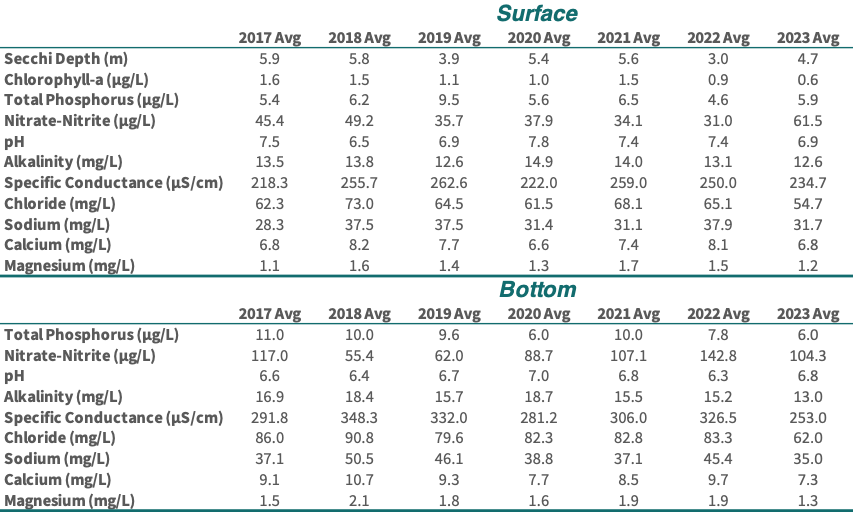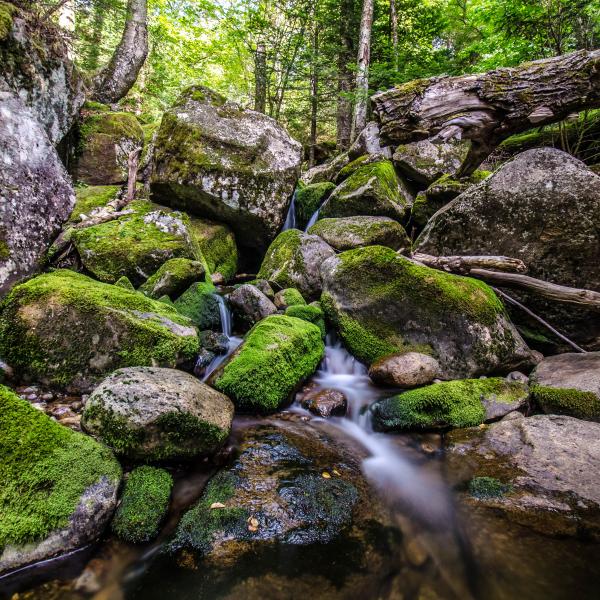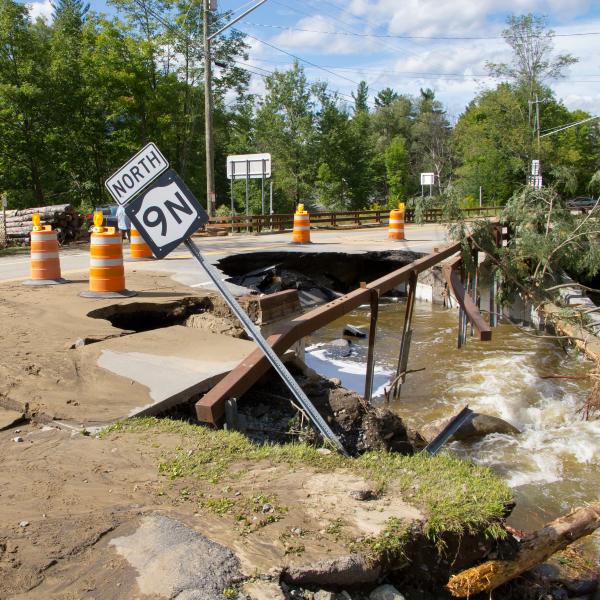Upper Cascade Lake
Upper Cascade Lake is the smaller of the two Cascade Lakes. Its surface area is 26.4 acres (9.7 ha) and it has a maximum depth of 62 feet (19.2 m). The lake has low nutrient concentrations and is classified as oligotrophic. pH is circumneutral and acid neutralizing capacity is adequate, indicating that the lake has low sensitivity to acid deposition. The primary threat to Upper Cascade Lake is road salt runoff. The lake's surface water chloride concentration is 44.8 mg/L which is 186 times greater than average.1 Further, in 1984 sampling by the Adirondack Lake Survey Corporation (ALSC) showed the surface water chloride concentration to be 27.5 mg/L, indicating that the concentration is increasing.
Sampling by the Adirondack Lake Survey Corporation in 1984 found the following fish species: Round whitefish, Brown trout, Brook trout, Splake, Lake chub, Golden shiner, and White sucker. Round whitefish are a state listed endangered species and are believed to be endemic to Upper Cascade Lake. Possession of Round whitefish is illegal, as is the use of baitfish in Upper Cascade Lake.
AFC's Work on Upper Cascade Lake
The Ausable Freshwater Center (AFC) samples Upper Cascade Lake on a monthly basis from May through September. We collect surface and deep water samples, as well as vertical profiles of temperature, dissolved oxygen, specific conductance, and pH. You can view last year's water chemistry data below.
2017-2023 Chemistry Data

1Laxson*, C.L., Yerger, E.C., Regalado, S.A., and D.L. Kelting. 2016. Adirondack Lake Assessment Program: 2015 Report. Paul Smith's College Adirondack Watershed Institute. Report No. PSCAWI 2016-04. 181p.


